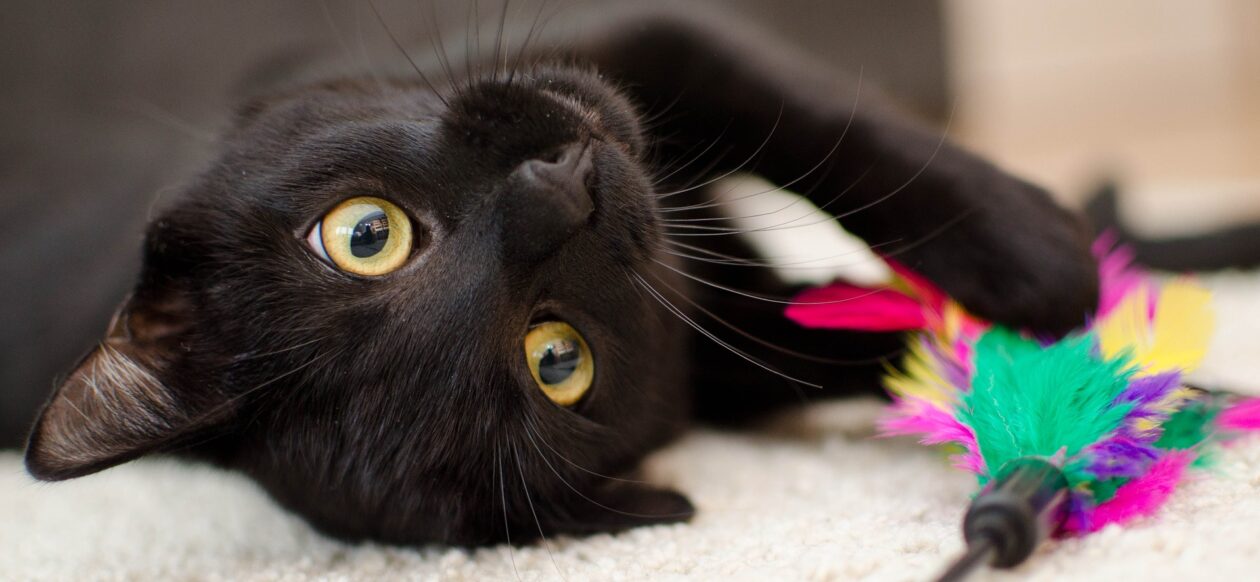With Easter right around the corner and springtime here, it’s time to highlight the list of the most poisonous and toxic plants for cats.

Many people give and receive lilies for Easter, but know that lilies are considered highly toxic and poisonous to cats—they are so severely poisonous they are in fact deadly.
The reported mortality rate for lilies is as high as 100% if left untreated later than 18 hours after ingestion.
For cats that even ingest a small amount of most types of lilies, severe kidney failure can occur within 36 hours. Just the yellow-orange pollen that falls off the stamen onto your table or counter is lethally poisonous to cats. Since cats groom, if the pollen gets onto your cat’s fur, be sure to wash it off with water or a wet towel, and make sure there are no traces left.
So if you love your cats, basically don’t accept lilies or many other types of flowers and houseplants into your house (here’s a complete list), or if you do—keep them in an area your cats don’t have access to. Just a few bites can be a death sentence.
Lilies Are Dangerous and Deadly for Cats
For lilies—the entire plant is toxic, but the most toxic part of the plant is the flower itself and the pollen. As little as one or two pieces of flower have been known to cause death. The most toxic lilies are the Stargazer, Easter, Asiatic, Day, Tiger and Japanese lilies. So this Easter, watch out for lilies be careful about giving lilies to cat owners, instead consider a non-plant gift.
Symptoms of Toxicity
Depending on the particular plant your cat has eaten, some of the first signs can be vomiting, loss of appetite, lethargy, tremors, seizures, convulsions and diarrhea—progressing to liver and kidney failure, coma and death. If your cat goes into kidney (renal) failure they will have increased thirst and urination (followed by little to no urination), dehydration and death. Kidney failure happens in approximately 36 – 72 hours after ingesting the plant.
Immediate Veterinary or Emergency Care
Time is critical, so don’t wait to contact and drive your pet to the vet or emergency center. The first signs can start showing in 6 hours, but the longer the poison stays in the body left untreated by a vet, the more deadly it is to the vital organs. So if you think your cat has ingested a part of a plant on the toxic list—leaves, bulbs, flowers, or essentially any part of a plant, you should take your cat to the vet immediately and treat it as an emergency. Cats treated 18 hours or longer after ingestion may be beyond treatment.
Treatment
If you get your cat to the vet immediately, they will aggressively begin treatment with IV fluid therapy. The prognosis for your cat can be very good with aggressive veterinary treatment within a few hours of ingestion.
I have personal experience with this—a friend of mine brought us a Stargazer Lily (one of the most toxic lilies) and while we ate dinner in another room, it sat on the kitchen counter and my cat Angus proceeded to eat some leaves. In the early morning, Angus was vomiting and he never vomits, so I knew something was wrong. I went to make coffee and saw leaves missing from the lily, then Googled it and discovered it was highly poisonous. I immediately called and raced Angus to our vet. It had already been 12 hours. Angus lived at our veterinary clinic for 4 days given charcoal therapy and IV fluids. Luckily he lived—and from that day on I have banned ALL living plants and flowers from our home. We have beautiful dried flower arrangements out of our cats reach, and I never have to worry. If friends or guests give us plants, we give them to our neighbors who don’t have pets.
10 Most Common Poisonous Plants and Houseplants
PetMD lists the 10 most common poisonous plants for cats, they include:
1) Autumn Crocus, 2) Azaleas, 3) Daffodil, 4) Dieffenbachia (or Dumb Cane), a common houseplant, 5) Tulip, 6) Kalanchoe (Mother In Law plant), a common houseplant, 7) Lily (Stargazer, Tiger, Day, Asiatic, Easter, Japanese and more), 8) Sago Palm, 9) Oleander, and 10) Cyclamen.
Top 10 Cat Poisons
1. Topical Spot-on Insecticides
2. Prescription Human Medications (e.g., Antidepressants, etc.)
3. Household Cleaners & Household Products
4. Lilies & Flowers/Plants
5. Insoluble Oxalate Plants (e.g., Diefenbachia, Philodendron, and other houseplants)
6. Cold & Flu Medication (e.g., Tylenol, etc.) and over-the-counter human medications
7. Human & Veterinary NSAIDs
8. Glow Sticks
9. Mouse & Rat Poison & Baits
10. Lawn & Garden Products – fertilizers
Toxic Plants List for Cats
Toxic Plants List – ASPCA’s most toxic plants list
Poison Hotline
Call the ASPCA Animal Poison Control Center: (888) 426-4435 (24 hours a day, 365 days a year) A $65 consultation fee may be applied to your credit card.

